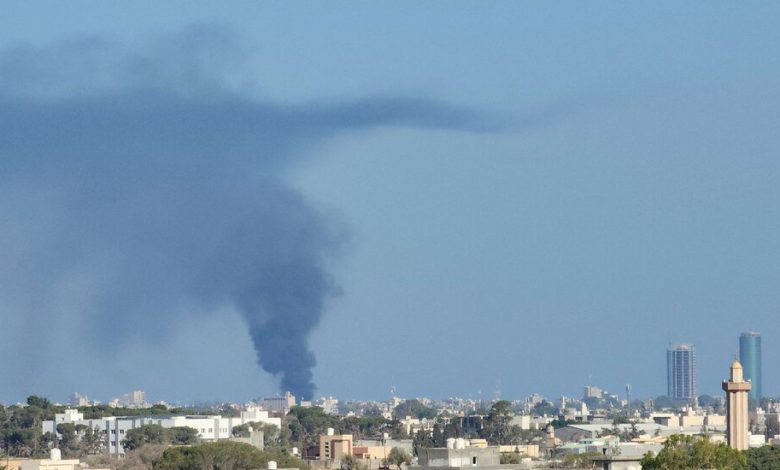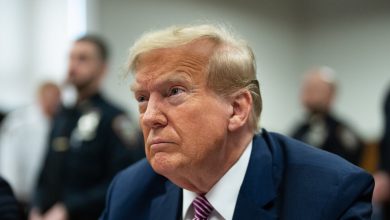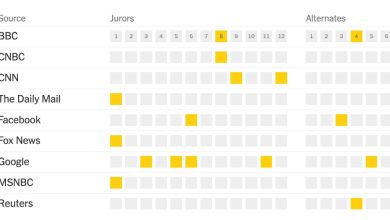Renewed Violence in Libya Reflects Power of Militias

Renewed Violence in Libya Reflects Power of Militias
-
Clashes in the capital, Tripoli, this week left at least 55 dead.
-
Rival militias wield tremendous power in the oil-rich country, which is a jumping-off point for migrants and refugees trying to reach Europe.
-
Progress toward a unified national government is stalled.


By Raja Abdulrahim and Russell Goldman
Aug. 17, 2023
At least 55 people have been killed this week in fighting in the Libyan capital of Tripoli, the deadliest clashes there in a year.
Here’s what’s happening and what it means.

Smoke billowing after clashes in Tripoli, Libya, on Tuesday.Credit…Mahmud Turkia/Agence France-Presse — Getty Images
The Big Picture
A Libyan revolt in 2011 toppled the longtime dictator Muammar el-Qaddafi amid the Arab Spring protests calling for democracy and greater freedoms across the Middle East and North Africa. But a civil war followed in Libya, and the country’s seven million people have suffered through uneasy cease-fires and intermittent fighting among competing militias ever since.
Today, Libya remains divided among dozens of rival armed groups, some of which are supported by foreign powers such as Russia, Turkey and the United Arab Emirates.
Hundreds of thousands of Libyans are in need of humanitarian aid. For years, the European Union has funded the Libyan Coast Guard in an effort to stop migrants and refugees arriving on its shores. But those returned to Libya can face abuse and torture in detention camps run by the militias.
The trafficking of weapons from Libya is also a problem.
The latest fighting is a sign of the conflict’s intractability more than a decade after it started. Repeated efforts to establish an elected, unified national government have failed, with a U.N.-backed plan to hold elections in 2021 postponed indefinitely.
The violence is also a reminder of the disappointment of the Arab Spring: None of the half-dozen nations where protesters challenged or toppled dictators back then are now democracies.
How the Fighting Started
-
By Wednesday, 55 people were dead and 146 others were wounded, and the clashes had subsided.
-
The clashes erupted on Monday between two influential militias, both tied to the interim government: the 444 Brigade, linked to the defense ministry, and Al-Radaa, or the Special Deterrence Force, linked to the presidency council.
-
The fighting began when members of the Special Deterrence Force, which oversees some prisons in Tripoli, arrested Col. Mahmoud Hamza, leader of the 444 Brigade. The deterrence force said that Colonel Hamza was wanted but did not publicly say why.
-
The tensions in Tripoli could be seen by other militias as an opportunity to try to establish a foothold in the capital. “Tripoli is a prize,” said Emadeddin Badi, a senior fellow at the Atlantic Council, an international affairs think tank. “If you can get a foothold in Tripoli, you can translate that into influence in government, business or secure your own funding at least,” he added. “Because if you’re there, the government will be forced to fund you because you have leverage.”
-
Late on Tuesday, it was announced that a cease-fire had been reached in coordination with Prime Minister Abdul Hamid Dbeiba under which Colonel Hamza would be handed over to a “neutral party.” He was released on Wednesday night.
At the Mercy of Armed Groups
“The violence also serves as a reminder to ordinary Libyans that they live at the mercy of armed groups and their continuing power struggles.”
— Mary Fitzgerald, nonresident scholar at the Middle East Institute, a research organization in Washington.
Mohammed Abdusamee contributed reporting.




